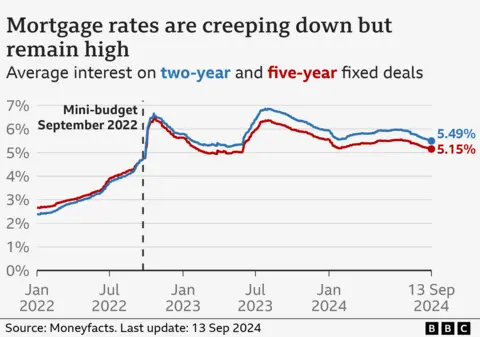Investing.com — Here is your Pro Recap of the top takeaways from Wall Street analysts for the past week.
InvestingPro subscribers always get first dibs on market-moving AI analyst comments. Upgrade today!
Apple
What happened? On Monday, Loop Capital upgraded Apple (NASDAQ:) to Buy with a $300 price target.
What’s the full story? Loop Capital has upgraded Apple based on insights from their Supply Chain Analyst John Donovan. Donovan highlights Apple’s potential to become the leading platform for Generative AI in the consumer market over the next few years. This potential is compared to Apple’s past transformative impacts with the iPhone in social media and the iPod in digital content consumption, both of which significantly boosted the company’s stock performance.
The brokerage’s analysis underscores Gen AI as a potential major growth driver for Apple. They have a price target of $300, which is 33x their projected $9.00 EPS for CY2026. This valuation is positioned at the higher end of Apple’s post-Covid P/E range of 20x to 35x. While there has been speculation about Apple’s potential benefits from Gen AI, Loop’s upgrade is specifically based on Donovan’s detailed assessment.
Despite their optimistic outlook, Loop maintains a cautious approach, noting that the full impact of Gen AI on Apple’s financial metrics will unfold gradually. They emphasize that the upgrade reflects confidence in Apple’s ability to leverage Gen AI to drive future growth, similar to the strategic advancements made with the iPhone and iPod in their respective technological eras.
Buy at Loop means “The stock is expected to trade higher on an absolute basis or outperform relative to the market or its peer stocks over the next 12 months.”
How did the stock react? Apple opened the regular session at $236.20 and closed at $234.40, a gain of 1.67% from the prior day’s regular close.
Shopify
What happened? On Tuesday, BofA Securities upgraded Shopify (NYSE:) to Buy with a $82 price target.
What’s the full story? BofA believes that the company, under the new CFO Jeff Hoffmeister, has turned a corner on balanced growth and margin following years of declining margin. The research team forecasts solid revenue growth and Free Cash Flow conversion from here, driven by solid high single-digit baseline eCommerce growth, steady share gains and disciplined expense spending.
BofA points out that revenue growth and disciplined spending are leading to healthy margin expansion going forward. They forecast a 17.4% operating margin for FY 2026, up from 14.3% in FY 2024.
The research team also notes that normalizing product mix-shift from lower-margin payments should result in a stable gross margin after years of decline (-650 basis points since FY 2017). Shopify is maintaining a ‘disciplined, limited headcount growth’ trajectory as a core tenet for operating leverage.
In an upside scenario, BofA projects FY 2030 revenue and FCF of $29.4 billion (+22% CAGR) and $8 billion (+33% CAGR), respectively.
Buy at BofA means “Buy stocks are expected to have a total return of at least 10% and are the most attractive stocks in the coverage cluster.”
How did the stock react? Shopify opened the regular session at $67.28 and closed at $69.75, a gain of 8.63% from the prior day’s regular close.
1-800-Flowers.com
What happened? On Wednesday, DA Davidson downgraded 1-800 FLOWERS.COM Inc (NASDAQ:) to Underperform with a $8 price target.
What’s the full story? DA Davidson has analyzed FLWS’ performance, noting that the company, which operates in the late-cycle discretionary consumer sector, has experienced year-over-year sales declines since the pandemic ended. Sales have decreased in every quarter since F3Q22, with the declines worsening from low- to mid-single digits to -8% to -18% Y/Y over the past five quarters. Before the pandemic, when the University of Michigan consumer sentiment index was in the 90s and above 100, FLWS reported several quarters of organic sales growth between +8% and +10% Y/Y. Currently, the Michigan index is in the 60s-70s, having recovered from a low of 50 in June 2022.
The brokerage believes that consumer sentiment needs to consistently exceed 80 for FLWS to return to low-single-digit sales growth. Bloomberg debit card data, which is 94% correlated to sales, indicates a worsening trend, with a -15% Y/Y decline in F4Q24 compared to -13% in F3Q24. DA Davidson suggests that the consensus estimate of -6% Y/Y sales for F4Q24 might be too optimistic, potentially leading to a miss. They also anticipate that FLWS could issue FY25 guidance below market expectations due to ongoing recession-level consumer sentiment, weak everyday gifting, and potential cost inflation.
As a result, DA Davidson has lowered its sales and EBITDA estimates for FLWS to below consensus levels. The brokerage has also reduced its target multiple from 5.5x to 5.0x and its price target from $9 to $8, based on a 5.0x CY25E EBITDA of $106M (down from $109M).
Underperform at DA Davidson means “Expected to produce a total return of -15% to +15% on a risk adjusted basis over the next 12-18 months.”
How did the stock react? 1-800-Flowers.com opened the regular session at $10.40 and closed at $10.01, a decline of 9% from the prior day’s regular close.
Doximity Inc.
What happened? On Thursday, Wells Fargo downgraded Doximity Inc (NYSE:) to Underweight with a $19 price target
What’s the full story? Wells Fargo acknowledges that while Doximity has an appealing financial profile with consistent Free Cash Flow margins of over 35%, their biopharma survey indicates a slowdown in growth. This is expected to continue driving a downward rerating in the stock. The research team’s survey suggests that market share gains may be plateauing due to several factors. These include a shrinking percentage of clients reporting digital ad budget growth, a client wallet mix towards Doximity that is approaching a plateau, and the fact that bundling products doesn’t always translate into more same-store sales.
Additionally, a large new account/brand in FY25 is positively skewing growth dynamics, likely creating tough comparisons for FY26. Some clients have also pulled back spend, and some competitors are capturing market share.
Furthermore, Wells Fargo points out that brand lifecycles could increasingly become a hurdle to Doximity’s growth prospects. Surveyed clients reported less desire to rely on Doximity to advertise more mature brands, reflecting the research team’s channel checks. This suggests that the net revenue retention rate could encounter more pressure over time as brands mature, which in turn may lead to declining ad spend with Doximity.
Underweight at Wells Fargo means “Total return on stock expected to lag the Overweight- and Equal Weight-rated stocks within the analyst’s coverage universe over the next 12 months.”
How did the stock react? Doximity opened the regular session at $27.03 and closed at $27.59 , a decline of 4.83% from the prior day’s regular close.
Owens & Minor
What happened? On Friday, Citi upgraded Owens & Minor Inc (NYSE:) to Buy with a $19 price target.
What’s the full story? The bank believes the 40% sell-off since the first-quarter earnings report has been excessively harsh. OMI has demonstrated strong momentum in its core P&HS business, with the de-stocking of PPE seemingly concluded. In the long term, Citi views Chinese tariffs as a potential advantage for OMI’s products manufactured in the Americas. Despite recent headlines concerning GLP-1, the bank notes that PD (pharmacy distribution) continues to grow above market expectations, a trend they anticipate will persist. Citi sees minimal risk to the FY24 numbers, reinforcing their positive outlook.
The new price target of $19 reflects a 9.3x FY25 P/E multiple and a 6.0x FY25 adjusted EBITDA, which is significantly lower than OMI’s peers and its historical valuation. This adjustment underscores Citi’s belief that OMI is undervalued and presents a compelling opportunity for investors with a higher risk appetite. The bank’s analysis suggests that the recent market reaction has been overly punitive, and they expect OMI to benefit from both its current business momentum and favorable long-term factors.
Buy at Citi means “Buy (1) ETR of 15% or more or 25% or more for High risk stocks.”
How did the stock react? Owens & Minor opened the regular session at $14.75 and closed at $14.82, a gain of 1.44% from the prior day’s regular close.

















































